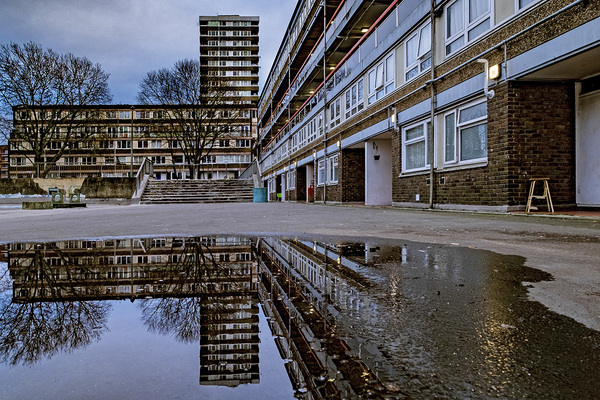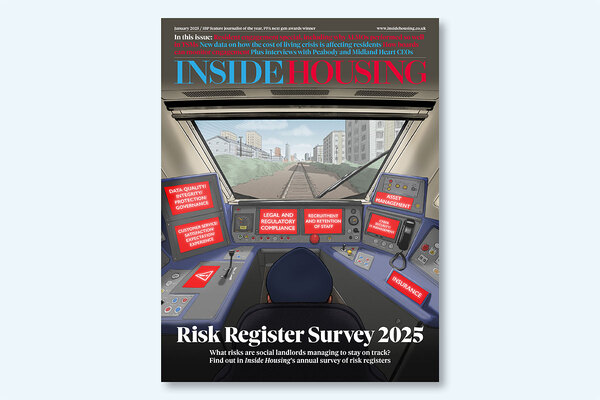You are viewing 1 of your 1 free articles

Amarjit Bains is programme director for homelessness support and prevention contracts at Bridges Outcomes Partnerships
Local authorities and housing associations should buy up private sector homes for the greater good
Building new homes is taking too long. We should be buying private homes and letting them at Local Housing Allowance rates, write Amarjit Bains
The primary purpose of housing associations today is to develop new affordable housing. This isn’t what they were originally for, many started by purchasing poor-quality homes, bringing them up to standard and giving to families most in need.
Going back to the days of the Ken Loach film Cathy Come Home, associations were focused on addressing the moral imperative of homelessness; helping those struggling in poor-quality or over-crowded accommodation by providing them good-quality homes at affordable rents.
They were meant to redress social injustice – supporting those in the most precarious of circumstances, creating stability to improve life chances. This was often achieved through purchasing private accommodation and carrying out work to ensure that a house could become a decent home.
In the current climate of a housing and financial crisis, the need for decent affordable homes is more desperate than ever before. In the homelessness arena, the mental trauma associated with the escalation of the homelessness journey is recognised; the psychological impact on families is significantly more severe and can cause lifelong trauma and disadvantage for children.
Presently, there are hundreds of families living for extended periods in hotels or unsuitable, overcrowded temporary accommodation. We have families of four or five sharing a tiny flat, often in bunkbeds. Somehow, we expect children to be able to play, parents to be able to sleep, young people to be able to study all in one room.
With the immense pressure on local authorities to find homes for everyone, they are often left with little or no choice but to house families and single adults in the same large blocks. Situations of children witnessing violence and drug use is not unusual, with the parent powerless to do anything due to there being no other option.
“The key to ensure success would be community integration and employment empowerment delivered to each family moved”
With private landlords increasing rents in line with demand, local authorities have taken a final resort decision to disperse families into accommodation across the UK. This was the same approach taken during the previous recession in 2008. It proved unsuccessful.
However, with chronic underfunding, a failure to build enough affordable homes (it seems as though this is not just a crisis of available housing, but of affordability – as the thousands of empty flats around London can testify), and a decade of austerity, local authorities are left with little choice but to start doing this again.
As the housing emergency deepens, building new homes will take too long to address the current crisis. Instead, housing associations need to help their local authority partners and communities now. This can be achieved by purchasing private sector homes and letting them at local housing allowance rates.
Housing associations are some of the biggest landlords in the country. They have the financial capability to purchase private sector homes. Across London and the UK, there are boroughs where this model would work, delivering the surplus required for an investment portfolio.
Further, by local authorities avoiding paying high rents and incentives to private landlords, these funds could be redirected and used instead to invest in alternative services that offer value to communities.
This private accommodation purchase model has been done before, but not very well. The key to ensure success would be community integration and employment empowerment delivered to each family moved. We need to think more relational and move away from the transactional approach. It is a great first step to move people into homes that are appropriate for them.
“We are now living the modern-day Cathy Come Home some 60 years after a majority of the current G15 housing associations were created”
However, we need to think more long term to ensure people can thrive. Many local authorities have engaged tenancy integration and sustainment services or provided them in house; the evidence of this approach speaks for itself with significantly increased long term tenancy success.
I would challenge board members and the executive teams of housing associations to go to the hotels and temporary accommodation, meet the families and not be moved by the devastation and absolute loss of hope many of the families feel.
We are now living the modern-day Cathy Come Home some 60 years after a majority of the current G15 housing associations were created.
It’s time to act. Please stand up and help address this with your local authority partners.
Amarjit Bains, programme director for homelessness support and prevention contracts, Bridges Outcomes Partnerships
Sign up for our homelessness bulletin
Already have an account? Click here to manage your newsletters












